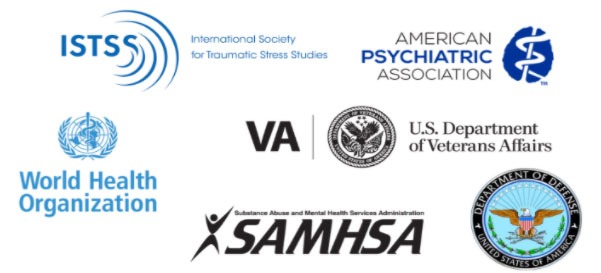Welcome to Rio Grande
EMDR Therapy
Individual Counseling
EMDR Therapy
EMDR Training For Therapists
What We Do
We specialize in EMDR (Eye Movement Desensitization and Reprocessing) to help you naturally heal from trauma, increase your positive emotional resources, and to simply feel better. When doing EMDR to address trauma, the client is not required to talk in detail about the traumatic event and for many people, it can be much quicker than other types of therapy. It is effective with all kinds of trauma (old, new, big, and small). EMDR has been proven to be an effective treatment for trauma recovery, anxiety, depression, and panic disorders. EMDR is also helpful in the treatment of chronic pain, addictions, and many other issues.
If you are ready to start the journey of healing, please give us a call.
EMDR Therapy is a Recognized Effective Treatment for PTSD

EMDR FAQ
EMDR therapy does not require talking in detail about the distressing issue or
completing homework between sessions. EMDR therapy, rather than focusing on changing the emotions, thoughts, or behaviors resulting from the distressing issue, allows the brain to resume its natural healing process.
EMDR therapy is designed to resolve unprocessed traumatic memories in the brain. For
many clients, EMDR therapy can be completed in fewer sessions than other
psychotherapies.
Our brains have a natural way to recover from traumatic memories and events. This process involves communication between the amygdala (the alarm signal for stressful events), the hippocampus (which assists with learning, including memories about safety and danger), and the prefrontal cortex (which analyzes and controls behavior and emotion). While many times traumatic experiences can be managed and resolved spontaneously, they may not be processed without help.
Stress responses are part of our natural fight, flight, or freeze instincts. When distress from a disturbing event remains, the upsetting images, thoughts, and emotions may create an overwhelming feeling of being back in that moment, or of being “frozen in time.” EMDR therapy helps the brain process these memories, and allows normal healing to resume. The experience is still remembered, but the fight, flight, or freeze response from the original event is resolved.
EMDR therapy helps children and adults of all ages. Therapists use EMDR therapy to address a wide range of challenges:
- Anxiety, panic attacks, and phobias
- Chronic Illness and medical issues
- Depression and bipolar disorders
- Dissociative disorders
- Eating disorders
- Grief and loss
- Pain
- Performance anxiety
- Personality disorders
- Post-Traumatic Stress Disorder (PTSD) and other trauma and stress-related issues
- Sexual assault
- Sleep disturbance
- Substance abuse and addiction
- Violence and abuse
EMDR therapy is a mental health intervention. As such, it should only be offered by properly trained and licensed mental health clinicians. EMDRIA does not condone or support indiscriminate uses of EMDR therapy such as “do-it-yourself” virtual therapy.
In the late 1980s, Francine Shapiro, Ph.D., discovered a connection between eye movement and persistent upsetting memories. With this personal insight, she began a lifelong study and development of Eye Movement Desensitization and Reprocessing (EMDR) therapy.
Over the years, and in the face of initial skepticism, Dr. Shapiro’s work developed from a hypothesis to a formal therapy process. EMDR therapy has been demonstrated to be effective for treating trauma in randomized clinical trials, case studies, and millions of clinical hours treating trauma and trauma-related disorders across the globe. The American Psychiatric Association, the U.S. Department of Veterans Affairs (USVA) and Department of Defense (USDOD), the United Kingdom’s National Institute for Health Care and Excellence (NICE), and the World Health Organization (WHO), multiple global organizations now recognize the effectiveness of EMDR therapy that Dr. Shapiro developed.
Most recently, the public acceptance of EMDR therapy was illustrated when Prince Harry reported that he engaged in EMDR therapy to treat trauma from his childhood. Sandra Bullock also opened up about using EMDR therapy to treat trauma from an at-home break-in.
Dr. Shapiro encouraged the foundation of EMDRIA, which comprises more than 15,000 mental health professionals who use EMDR therapy in their clinical practice to treat many conditions that impact mental health. Dr. Shapiro died in 2019, but her legacy of trauma-informed mental health care lives on in the EMDR therapists, researchers, and patients for whom EMDR therapy heals.

Experiencing EMDR Therapy
After the therapist and client agree that EMDR therapy is a good fit, the client will work through the eight phases of EMDR therapy with their therapist.
Attention will be given to a negative image, belief, emotion, and body sensation related to this event, and then to a positive belief that would indicate the issue was resolved.
A typical EMDR therapy session lasts from 60-90 minutes. EMDR therapy may be used within a standard talking therapy, as an adjunctive therapy with a separate therapist, or as a treatment all by itself.
